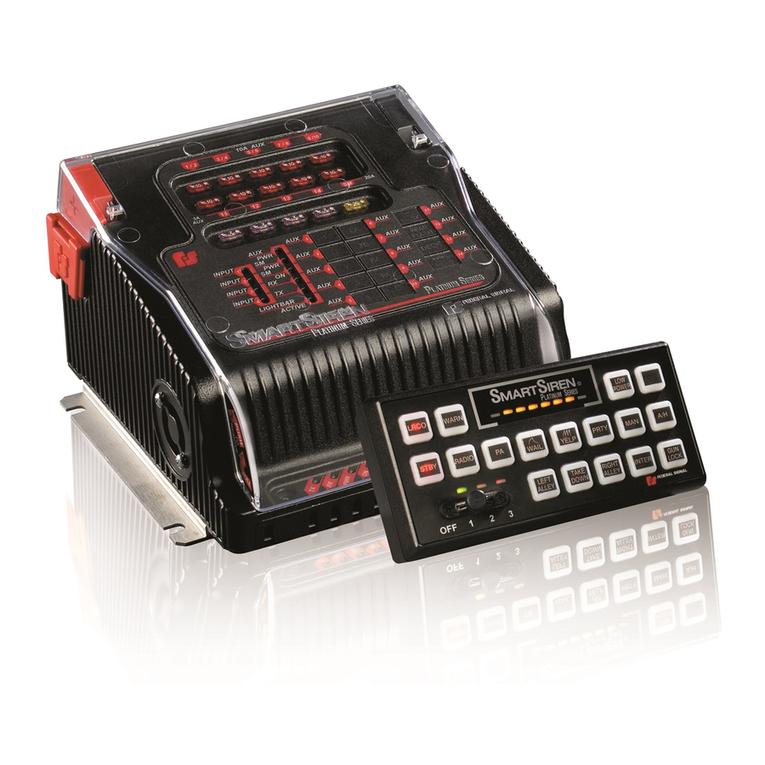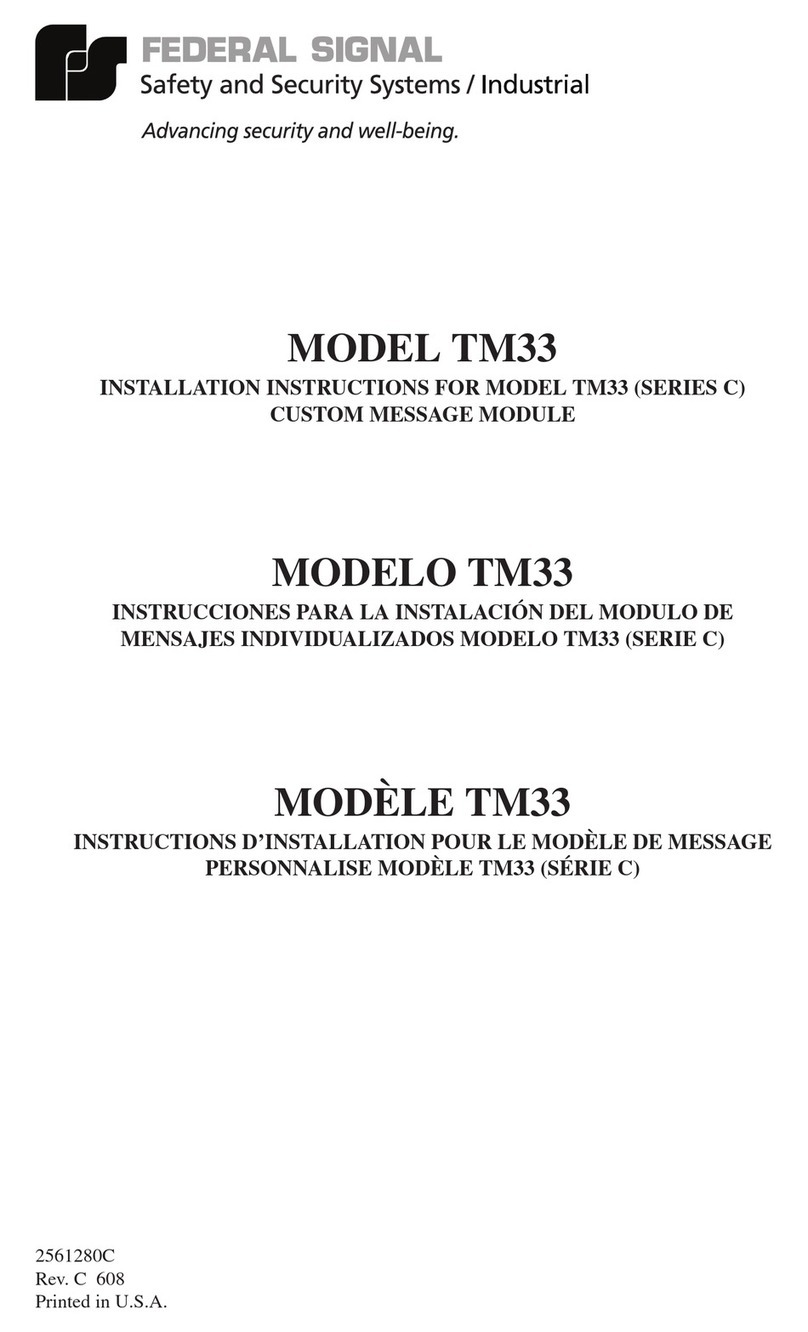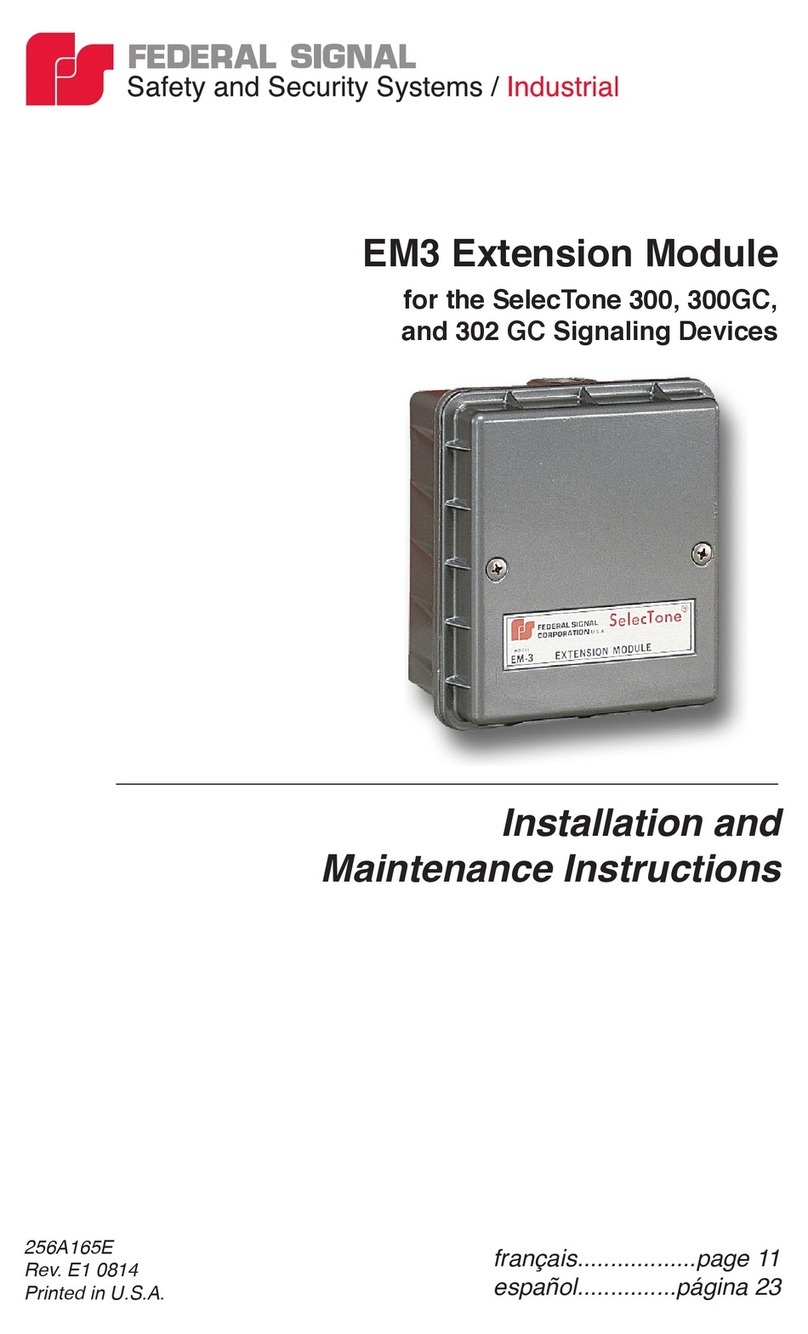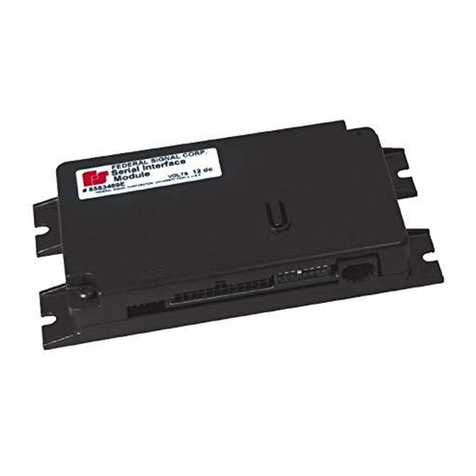
- ii -
SAFETY NOTICES
People’s lives depend on your selection of suitable equipment and installation sites and
your safe installation, service, and operation of our products. Follow Federal Emergency
Management Agency (FEMA) recommendations. Obtain copies of the latest revision of
FEMA’S “Outdoor Warning Guide (CPG 1-17) and “Civil Preparedness, Principals of Warning
(CPG 1-14) by calling FEMA at (202) 646-3484 or writing to them at 500 C St., South West,
Washington, D.C. 20472. It is also important to read, understand and follow all instructions
shipped with this product. In addition, listed below are some other important safety
instructions and precautions you should follow:
PLANNING
• If suitable warning equipment is not selected, the installation
site for the siren is not selected properly or the siren is not
installed properly, it may not produce the intended optimum
audible warning. Follow Federal Emergency Management
Agency (FEMA) recommendations.
• If the sirens are not activated in a timely manner when an
emergency condition exists, they cannot provide the intended
audible warning. It is imperative that knowledgeable people,
who are provided with the necessary information, are available
at all times to authorize the activation of the sirens.
• When sirens are used out of doors, people indoors may not be
able to hear the warning signals. Separate warning devices or
procedures may be needed to effectively warn people indoors.
• The sound output of sirens is capable of causing permanent
hearing damage. To prevent excessive exposure, carefully plan
siren placement, post warnings, and restrict access to areas near
sirens.
• Activating the sirens may not result in people taking the desired
actions if those to be warned are not properly trained about the
meaning of siren sounds. Siren users should follow FEMA
recommendations and instruct those to be warned of correct
actions to be taken.
• A siren that doesn’t work won’t provide any warning. After
installation, servicing, or repair, test the siren system to confirm
that it is operating properly. Test the system regularly to con
firm that it will be operational in an emergency.
• If future service and operating personnel do not have these
instructions to refer to, the siren system may not provide the
intended audible warning and service personnel may be exposed
to death, permanent hearing loss, or other bodily injury. File
these instructions in a safe place and refer to them periodically.
Give a copy of these instructions to new recruits and trainees.
Also give a copy to anyone who is going to service or repair the siren.
































